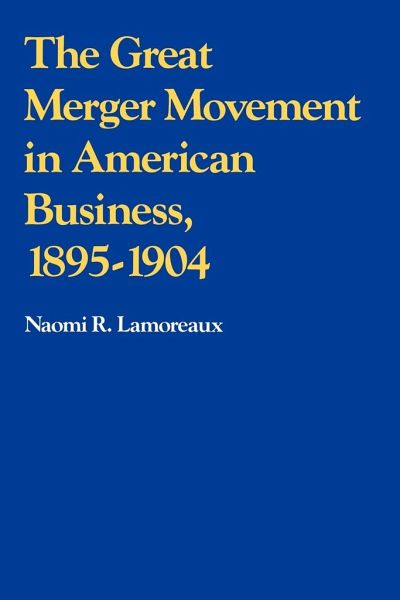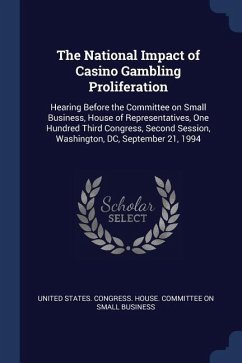
The Great Merger Movement in American Business, 1895 1904
Versandkostenfrei!
Versandfertig in 1-2 Wochen
31,99 €
inkl. MwSt.

PAYBACK Punkte
16 °P sammeln!
Between 1895 and 1904 a great wave of mergers swept through the manufacturing sector of the U.S. economy. More than 1,800 firms disappeared into horizontal combinations, at least a third of which controlled more than 70 percent of the markets in which they operated. In The Great Merger Movement in American Business, Naomi Lamoreaux explores the causes of the mergers, concluding that there was nothing natural or inevitable about turn-of-the-century combinations. With the aid of a formal model, Lamoureaux demonstrates that the merger wave was the product of a particular historical combination of...
Between 1895 and 1904 a great wave of mergers swept through the manufacturing sector of the U.S. economy. More than 1,800 firms disappeared into horizontal combinations, at least a third of which controlled more than 70 percent of the markets in which they operated. In The Great Merger Movement in American Business, Naomi Lamoreaux explores the causes of the mergers, concluding that there was nothing natural or inevitable about turn-of-the-century combinations. With the aid of a formal model, Lamoureaux demonstrates that the merger wave was the product of a particular historical combination of circumstances: the development if capital-intensive production techniques; a spurt of rapid growth in a number of heavy industries in the late 1880s and early 1890s; and the panic and depression of 1883. Together, this sequence of events produced an episode of abnormally severe price competition that manufacturers finally turned to consolidation to alleviate. Despite her conclusion that the mergers were not inevitable, Lamoreaux does not accept the opposing view that they were necessarily a threat to competition.
Table of contents:
Acknowledgments; List of tables and figures; 1. Introduction; 2. Product differentiation, mass production, and the urge to merge: competitive strategies and collusion in the late nineteenth century; 3. High fixed costs and rapid expansion: a model of price warfare and two examples; 4. Quantitative and qualitative evidence on the great merger movement; 5. What changed? the impact of consolidations on competitive behaviour; 6. The great merger movement and antitrust policy; 7. Conclusion; Bibliographical essay; Index.
Between 1895 and 1904 a great wave of mergers swept through the manufacturing sector of the U.S. economy. In The Great Merger Movement in American Business, Lamoreaux explores the causes of the mergers, concluding that there was nothing natural or inevitable about turn-of-the-century combinations.
Table of contents:
Acknowledgments; List of tables and figures; 1. Introduction; 2. Product differentiation, mass production, and the urge to merge: competitive strategies and collusion in the late nineteenth century; 3. High fixed costs and rapid expansion: a model of price warfare and two examples; 4. Quantitative and qualitative evidence on the great merger movement; 5. What changed? the impact of consolidations on competitive behaviour; 6. The great merger movement and antitrust policy; 7. Conclusion; Bibliographical essay; Index.
Between 1895 and 1904 a great wave of mergers swept through the manufacturing sector of the U.S. economy. In The Great Merger Movement in American Business, Lamoreaux explores the causes of the mergers, concluding that there was nothing natural or inevitable about turn-of-the-century combinations.









![Dollars and Sense in the Poultry Business, Efficient Training in Poultry Husbandry and Methods Revealed Which Will Makes [!] Success More Certain Cover Dollars and Sense in the Poultry Business, Efficient Training in Poultry Husbandry and Methods Revealed Which Will Makes [!] Success More Certain](https://bilder.buecher.de/produkte/65/65552/65552386n.jpg)




